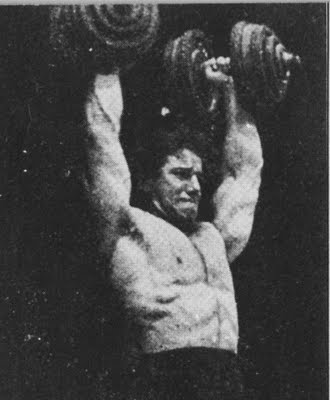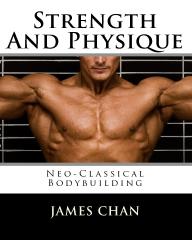I recently got back to training at a commercial gym. As a Christmas gift, my wife bought me a membership at a brand new gym that was due to open up in a few months. I still have my home gym, and for several years the home gym served me well. But because it was a home gym, I was limited to free weights: bodyweight, dumbbells, barbells, kettlebells.
I was kind of looking forward to working out in a new environment with new and different pieces of equipment. It had been awhile since I had trained on machines or cables, and I was looking forward to providing my muscles with a new stimulus.
When the gym finally opened up, I was like a kid in a candy store. I wanted to try all of the machines and training equipment the gym had.
But as I trained at this commercial gym over the past few months, I ended up going back to the basics: free weights. My muscles had grown so used to handling free weights, that machines really didn’t do it for me anymore. My muscles didn’t really respond to cable flyes or cable curls. They didn’t grow that much bigger off of leg curls, leg extensions or even leg presses. I still prefer pull-ups and chin-ups to pulldowns and cable rows.
Growth comes from adversity. Your muscles grow when the exercises are hard to do. They don’t grow when you sit in a chair, and you push a lever. Your mind and body crave stimulation, and you can only get stimulation by making exercises more and more difficult. Instead of isolating muscles in my workouts, I gravitated towards exercises where my muscles work as a single unit. Instead of isolation, my muscles became accustomed to integration.
In military strategy there is a concept called “local superiority.” Local superiority is when you concentrate your forces in one place to outnumber your enemy at that particular locale. So although your enemy may outnumber you overall and have “battlefield superiority,” you can marshall your forces to a strategic location where the enemy is weak and have local superiority.
Local superiority applies in martial arts as well. Your opponent may outweigh you or may be stronger than you. But if you are skilled, then you can attack his vital spots: head, neck groin. Even if you weigh 150 pounds and he weighs 200 pounds, you can still concentrate 150 pounds of force in a crotch kick.
Local superiority applies to strength training. In conventional bodybuilding training, you try to build a particular body part by isolating it. In other words, you choose an exercise that maximizes the tension on a target muscle and makes it works in isolation without the help of other muscle groups. In order to lift more weight, however, you should tense and flex your entire musculature. By tensing all of your muscles, you are creating local superiority. You’re applying all of your muscles as a single unit to lift the weight.
Bodyweight exercises require all of your muscles to work as a single unit. Bodyweight exercises require you to flex your entire musculature and apply the concept of local superiority in lifting. This is because you must push or pull your entire bodyweight. In order to push or pull your bodyweight, you have to stabilize your body while the prime movers do the work.
For instance, if you do a pushup, then your prime movers (chest, delts and triceps) push while the rest of your musculature (quads, abs, back, etc.) stays flexed to keep your body straight and rigid so that it can be easier to move. You can’t move weight as easily when it’s flopping around and sagging all over the place. Big difference between lifting a solid 45 pound barbell and a half filled 45 pound sand bag.
Body weight exercises require you to exert total body control. Total body control is the foundation for strength. Exerting control over your own body weight makes it easier to exert control over external weight. You have to control yourself before you can control other things or other people.
Law enforcement, military, martial artists and convicts use body weight training for this reason. They do not, however, necessarily use body weight training most efficiently. They usually just employ high rep calisthenics in their physical training. Although high reps are great for fat loss and muscle definition, high reps alone will not make you stronger.
Not only this, but these groups focus on body weight training out of necessity, not out of efficiency. The great thing about body weight exercises is that they can be performed anywhere, with almost no equipment. The only essential piece of equipment you need is a horizontal bar from which to hang from to do pull-ups and chin-ups. So if you’re in a prison cell, then you have no choice but to do pushups, dips and handstands.
Body weight training is also good for large groups of trainees, which is why the military, martial arts instructors and law enforcement academies use calisthenics. When you have no equipment and lots of people, then body weight training is the way to go. You can train large groups of people as long as you have the space.
The problem is that high rep calisthenics by themselves don’t do much to build size and strength. High rep calisthenics coupled with difficult lower rep calisthenics, however, will build muscle mass. Calisthenics coupled with other free weights (dumbbells, barbells, kettlebells) will build more size and strength than calisthenics alone, simply because you’re exposing your muscles to a wide variety of stimuli.
The following are my favorite exercises to build each muscle group. Many of them are body weight exercises and almost all are full body exercises, exercises that require the whole musculature to function as a single unit in order to move the weight. These exercises require total body control.
Back: Pull-ups and chin-ups are the best back exercises, bar none. People who say that they can’t do pull-ups because of all their muscle are bullshitting themselves. They just don’t want to work hard or look weak. Plenty of massive guys can do pull-ups. I’ve trained women to do pull-ups.
Chest: For beginners, I think dips are an excellent way to build the chest. Even at super high reps, you can build a thick chest. The reason why the dip is such a good chest builder is the stretch that you get at the bottom range of motion. Plus you can do them anywhere. Just take 2 chairs and you can do dips.
Another excellent body weight exercise are hanging ring flyes:
I usually do ring flyes and then do ring pushups immediately after:
Triceps: I’ve become more and more fond of the one arm pushup over the years. In my upcoming book, I will go over exercise progressions that will help you achieve a one arm pushup.
Biceps: As I mentioned in a previous post, I’m working on my one arm chin-ups. They’re not only a good lat builder, but they will overload the biceps with more weight than they’re used to. But if you can’t do one arm chin-ups, then towel chin-ups will serve as a nice baby step:
Quadriceps: One-legged squats require you to exert total body control, because if you don’t, then you’ll fall flat on your ass. If you can’t do them or you can’t go all the way down, then you can do them with the help of a pole. People will think you’re training to be a stripper, but who cares what they think:
Hamstrings: The Platform Deadlift is my favorite hamstring exercise. It is also a good back exercise. Your midback will get incredibly thick from this exercise. Do platform deadlifts for awhile, and your weights will shoot up when you switch back to regular deadlifts without a platform:
Abs: Hanging leg raises (HLR) are my favorite ab exercise, but if you don’t have access to a bar, then you can do the HLR’s cousin, the Dragon Flag:








Leave a comment